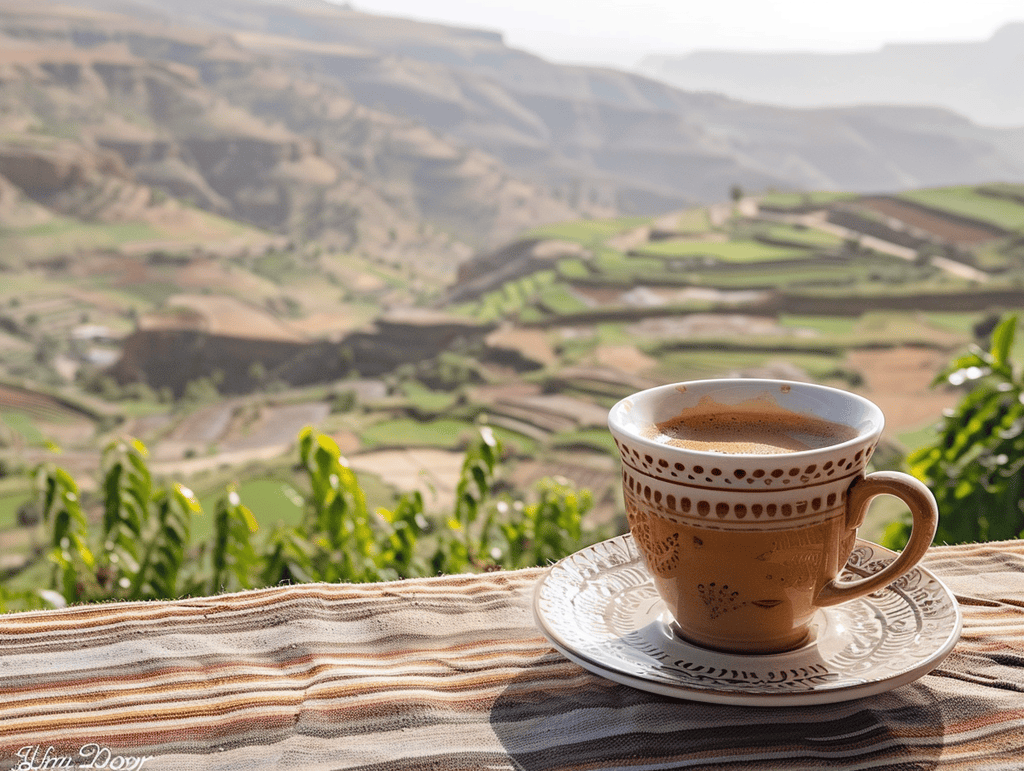Guatemala has a long history of successful coffee production. It is renowned for its high-quality coffee, which is a vital part of the country’s economy and provides livelihoods for many rural communities. It is also the first country to develop an origin system to help properly characterize coffees from their eight separate growing regions.
In this profile on the incredible coffee-growing country of Guatemala, Mystic Monk Coffee covers everything you need to know about Guatemalan coffee. Learn where its delicious flavors come from, and discover the depth of history and hard work that goes into bringing every bean to you.
History of Coffee in Guatemala
The coffee plant is said to have first been introduced by the Spanish, but large-scale coffee cultivation in Guatemala began between 1850 and 1860. During this time, plantations quickly spread around southwest Guatemala.
Its success as a crop was slow, as it took time for growers to establish their practices, but also due to a lack of proper technology and labor. However, by 1880, Guatemalan coffee became a major export and quickly became recognized for its incredible quality.
By the late 19th century, coffee had transformed Guatemala's economy, leading to significant social and infrastructural changes. The government supported the coffee industry by providing land and incentives to farmers.
Today, Guatemala ranks 11th among the world's leading coffee producers, accounting for around 1.8% of global coffee production. It employs more than 125 thousand families, with around 44% of producers being smallholder farms. For the Guatemalan people, coffee is more than a beverage, it’s a national heritage.
Guatemala’s Key Coffee Growing Regions
The 8 key coffee-growing regions in Guatemala are Acatenango, Antigua, Atitlan, Coban, Fraijanes, Huehuetenango, New Oriente, and San Marcos. Each region’s unique characteristics, such as its climate conditions and geography, create significant differences in the smell and taste of the coffee grown there.
Antigua is famous for producing some of the best quality Guatemalan coffee due to its abundant volcanic soil and perfect climate for coffee plants. The region provides high-altitude growing areas, plenty of rainfall, and cool temperatures for most of the year.
Coban is known to offer a more humid and subtropical climate. It gets much more annual rainfall and lower average temperatures, yet the area’s soils are composed more of clay and limestone, making them less fertile and ideal for coffee growing.
The highlands of Huehuetenango are another region that produces high-quality coffee due to its high altitudes and unique microclimate. Located near Guatemala’s border with Mexico, the warm air from its nearby plains ensures coffee plants avoid frost while maintaining ideal temperatures.
These are just a few examples of the distinct conditions each region contains that can affect the flavor and texture of the coffees grown there. Be sure to explore and experience brews from each, as all provide their own distinguishing characteristics to enjoy.
Varieties of Guatemalan Coffee Beans
Guatemala primarily grows Arabica coffee beans. Its most traditional coffee varieties include Bourbon, Caturra, Catuai, Pa che, and Typica. However, to improve diversity and ensure the long-term sustainability of the industry, Guatemala has also introduced new varieties, including the specialty Geisha coffee bean, Pacamara, Maragogype, and Maracaturra.
There are small developments toward low-altitude cultivation of Robusta beans. These are considered favorable due to their resistance to disease and pest infestation and the chance to help expand Guatemala’s coffee industry.
Guatemalan Coffee Cultivation and Harvesting
Small Guatemalan coffee farmers often hand-pick their beans from shade-grown orchards, which protect them from direct sunlight and improve the biodiversity of the local ecosystem. These meticulous and sustainable practices ensure growers regularly produce the highest quality beans possible.
Guatemalan Processing Methods
Most Guatemalan coffee is produced using washed processing methods, while honey and natural methods are rarely used among a tiny number of farmers. The washed process mainly involves fermenting and washing the beans, then drying them in direct sunlight.
While most regions do this naturally, high-humidity regions like Coban use mechanical drying methods. The widespread use of washed methods ensures Guatemalan coffees often have a bright acidity and clean flavors.
The Flavor Profiles of Guatemalan Coffee
Speaking of flavors, let’s discuss the tasting experiences you can expect from the various Guatemalan coffees you’ll find. In general, you can expect a bright acidity with a full, almost syrupy sip, with some varieties offering a more velvety texture. In terms of flavors, expect nutty chocolate, sweet citrus or plum, honey, and earthy cedar.
For more regional varieties, the best taste comes from Antigua Guatemalan coffee, which has a complex flavor of spice and dark chocolate that makes it a delicious treat. Coban coffee is another excellent choice, with a more fruity flavor that matches its acidity and a winey body. Huehuetenango is also going to be fruity but also more buttery in the body and florally sweet in the aroma.
Those are just some examples but expect as much diversity of flavor and enjoyment from regional varieties from New Oriente, San Marcos, Atitlan, and Fraijanes as possible.
Famous Guatemalan Coffee Brands and Cooperatives
To ensure an authentic experience, some notable Guatemalan coffee brands include Finca El Injerto, Fat Cat, El Cafetalito, Cafe Azotea, and Paradigma. They are all known to provide the best of Guatemalan coffee and are among the most favorite in and out of the country.
As for its cooperatives, De La Gente is one organization that partners with over 140 small-scale producers and 8 cooperatives together, including the Coffee Growers of San Miguel Escobar, the Union of Small-Scale Producers, and more. There is also the FEDECOCAGUA cooperative, which supports over 20,000 local farmers by providing resources and promoting fair trade practices.
These organizations ensure that Guatemalan Coffee maintains its high standards and ethical practices while also maintaining the livelihoods of thousands of coffee growers across the country.
Recent Challenges and Sustainability Efforts
Rising fertilizer prices, labor shortages, and a long-term lack of processing infrastructure are among the greatest challenges that coffee growers face in Guatemala. Farms are also reporting issues with pests and diseases such as leaf rust, which have diminished long-used coffee varieties over the past several years.
Efforts to help overcome these many issues include diversifying coffee varieties, which will improve resilience while sustaining ecological biodiversity among coffee plants and their surrounding environments. Some growers also recommend changing up the concentrations of crops they grow, planting more than just coffee, to ensure farmers maintain a steady income in the long term.
In Conclusion
Guatemalan coffee had rough beginnings but has since become a central part of the country’s history and cultural heritage. Its growers also produce some of the finest coffees in the world, with regional varieties such as the Antigua Guatemalan becoming the most sought-after among specialty coffee enthusiasts.
Guatemala is easily one of the best places to look for coffee. In addition, you can find other freshly roasted and deliciously flavored coffees closer to home from Mystic Monk Coffee. Our order of Carmelite monks are artisans, producing carefully roasted selections of Guatemalan beans (in blends such as Paradiso Blend) to ensure they bring out the best flavors possible.
We also regularly produce a fine selection of blends and single-origin coffees. Browse our selection of delicious coffee today to discover incredible tastes and aromas in your next brew.
Read more

Honduran coffee is currently among the top coffee producers in the world. While they began producing more commercial-grade coffees that were of low to middle quality, farmers have since developed t...

Jamaican coffee has been recognized for decades as some of the world’s best coffee ever produced. Although it is produced in far smaller amounts than other Caribbean and South American coffee, that...

